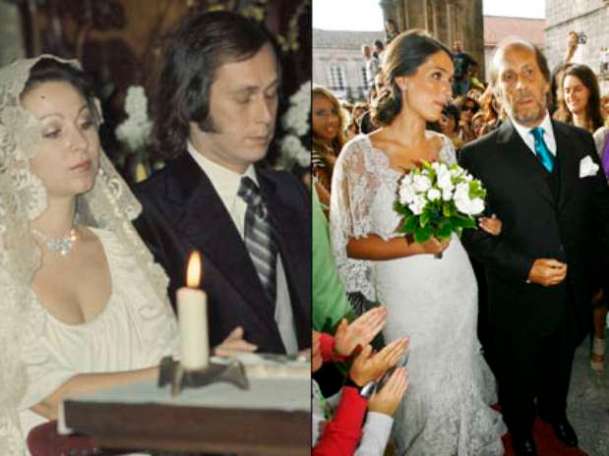ENTRE DOS AGUAS
Después de haberte amado tanto,
de haberte regalado mis noches de amor,
aquí me tienes de nuevo esperando,
necesitando tu lluvia y tu sol.
Después de haber nadado en llantos,
mis lágrimas amargas llegaron al mar,
Sólo en la arena escuchando cantos de sirena,
que pena me da.
Te quiero y sólo espero
ser tu compañero cuando llegue el alba,
pan comedero que busca tu plata,
brisa que besa tu piel.
Me siento prisionero de los dos luceros
que alumbran tu cara
me desespero cuando tú me faltas
quiero tenerte otra vez.
Te estuve en sueños dibujando,
pero yo no alcanzaba tu cara a pintar,
llegando el día desperté flotando
la melancolía de la soledad.
Creí morir de desaliento,
la vida se agitaba en nostalgias de amor,
como me dolía ver pasar el tiempo
sin el alimento de tu corazón.
Te quiero y sólo espero
ser tu compañero cuando llegue el alba,
pan comedero que busca tu playa,
brisa que besa tu piel.
Me siento prisionero de los dos luceros,
que alumbran tu cara,
me desespero cuando tú me faltas.
Quiero tenerte otra vez.
Te quiero y sólo espero
ser tu compañero cuando llegue el alba,
pan comedero que busca tu playa,
brisa que besa tu piel.
Me siento prisionero de los dos luceros
que alumbran tu cara,
me desespero cuando tu me faltas.
Quiero tenerte otra vez.
Paco de Lucía
Curiosidades:
El legado discográfico de Paco de Lucía no tiene ninguna mancha. El genio de Algeciras cuidó tanto su obra que sólo grabó cuando consideraba que podía aportar alguno nuevo y rompedor. En su primera etapa, la más prolija, tal vez hay alguna pieza más aguada, pero a partir de «Fuente y caudal» cada uno de sus discos fue una revolución. Cada cual tiene su nueva aportación a la guitarra. Sin embargo, el toque con el que se hizo mundialmente conocido fue «Entre dos aguas», prácticamente el único de su carrera que creó por casualidad.
Fue en la casa Polygram en 1973. Paco había cuidado al milímetro aquella obra, que para la época era absolutamente rompedora dentro del flamenco. Pero al terminar la grabación, el productor, José Torregrosa, le dijo que faltaba una pista para poder completar el vinilo. Paco no tuvo más remedio que improvisar a partir de una rumba que más o menos tenía ya vista, pero que ni mucho menos estaba cerrada. En sus propias guías oficiales se asegura que fue «un tema de relleno». El de Algeciras tuvo que solucionar la papeleta allí mismo, así que tuvo que buscar otras referencias para, a partir de ellas, improvisar.
Y así como recordó la famosa canción de Las Grecas, «Te estoy amando locamente», compuesta por Felipe Campuzano, que le había escuchado a las hermanas de Valladolid en los garitos de Madrid. Basta con tararear el inicio de «Entre dos aguas» y la canción de Las Grecas para comprobar que en ambas está la misma melodía. Pero no fue la única referencia que cogió en aquella improvisación del estudio de grabación. Aquel mismo año Los Marismeños grabaron el disco «Sonido andaluz» con su famosa rumba «Caramba, carambita». La parte final de «Entre dos aguas» recoge claramente esta melodía. No se sabe si fue antes el huevo o la gallina. Pero esto demuestra que Paco de Lucía estuvo abierto a todo para reconvertirlo al flamenco. Por eso aquella rumba hecha por casualidad batió récords.
Vida privada:
Contrae matrimonio en Ámsterdam, donde tuvieron que viajar dada la oposición a la boda de la familia de la novia, con Casilda Varela Ampuero en enero de 1977, con la que tuvo tres hijos, Casilda (1978), Lucía (1979), Francisco. Después de veinte años el matrimonio se separa. Paco conocería la que luego fue su segunda esposa, Gabriela Carrasco, en Cuba. Con ella tuvo dos hijos, Antonia y Diego.28
La madre de Casilda Varela, Casilda Ampuero, pertenecía a la oligarquía de Neguri procedente de Durango. El abuelo materno, José María Ampuero Jáuregui, fue alcalde foral de Durango y diputado provincial a Cortes, y organizó las Fiestas Eúskaras que se celebraron en Durango en 1885. El padre de Casilda Varela, el general Varela, fue un militar muy destacado que llegó a ser ministro del ejército con Franco. Esta familia tenía en propiedad la casa «Etxezuri» («casa blanca» en castellano) en la localidad vizcaína de Durango. Paco de Lucía se retiraba a esa casa con su mujer para descansar y componer entre sus giras.
Paco de Lucía vivió sus últimos meses en Playa del Carmen, una pequeña ciudad caribeña localizada en el estado de Quintana Roo, México a unos kilómetros de Cancún. En una entrevista para Magazine del diario El País aseguró que «Allí es donde de verdad disfruto en Playa del Carmen, con su mar tranquilito. Voy, me alquilo una casa y me dedico a la pesca submarina. Y luego me cocino lo que he pescado y ya está. No quiero más que eso. Ahora pienso mucho en el tiempo, que ya no tengo tanto. Por primera vez creo que tengo que darme prisa y quedarme más tiempo en casa y dedicarme a componer, que es en definitiva lo que va a quedar. Los conciertos se los lleva el aire».

Para los amantes de la guitarra:
INTRO:
e:————————————————————-|
B:————————————————————-|
G:————————————————————-|
D:————————————————————-|
A:–0—–0—–0-1-2—–2—–2-1-0—–0—–0-1-2—–2—-|
E:—–0—–0———2—–2———0—–0———2—–2-|
PUNTEO A: (2 VECES)
e:-3-3-2-0———-0-2-3-5-3-2-0-2-0—-0-2-3-2-0————-2h0—2h0-|
B:——–3-3-1–1-3—————–3–3———3-3-1–0-1-3—-4—–4|
G:———————————————————————–|
D:———————————————————————–|
A:———————————————————————–|
E:———————————————————————–|
PUNTEO B:
e:–3-3-2-5-3-7-5-8-7-10-8-7——————————-2h0—2h0–|
B:————————–10-8-7h8——–7–8-7————4—–4-|
G:———————————-9-7–7-9——-9-7-7————–|
D:——————————————————10————|
A:——————————————————————–|
E:——————————————————————–|
ACOMPAÑAMIENTO:
suena muy bien si una guitarra toca el punteo
mientras la otra hace esto:
LAm7 SIm7 LAm7 SI7
Para los amantes del bajo:
Esta melodía tiene 3 fases, esta es la primera que se repite
continuamente, hasta el primer corte
G————————–
D————————–
A–1—-1—1–2–3—-3—
E—–1—1———-3—–
Este es la segunda fase de la melodia que se repide continuamente
G——————————————————–
D–3—3—3———————————————
A—-2—2—-5—5—5–3—3—3—3–2—2—2—2—-
E—————6—6——4—4—4——3—3—3——
Y esta es la ultima fase que la dicta la melodia igual se repite
hasta el final.
Fuente: http://acordes.lacuerda.net
https://www.youtube.com/watch?v=NvlrCKi-ss4
Espero que os haya hecho disfrutar
¡Feliz fin de semana!
La Gata de Chamberí
BETWEEN TWO STOOLS
After having loved you so much,
having given you my love nights,
here I am, waiting again,
in need of your rain and sunshine.
After having swum in weepings,
my bitter tears flowed into the sea,
alone on the sand, listening to siren songs,
how sad I feel
I love you and all I expect is
to be your companion at the crack of dawn,
sailing boat searching for your beach,
the breeze that kisses your skin.
I feel like a prisoner of the two stars
which light up your face,
I feel desperate when you’re not here,
I want to have you again.
I was sketching you in my dreams,
but I couldn’t draw your face,
and when the morning came I woke up floating
in the melancholy of loneliness.
I thought I’d die of dejection,
life was stirring up in love nostalgia,
how it hurt to see time go by
without the nourishment of your heart.
I love you and all I expect is
to be your companion at the crack of dawn,
sailing boat searching for your beach,
the breeze that kisses your skin.
I feel like a prisoner of the two stars
which light up your face,
I feel desperate when you’re not here,
I want to have you again.
I love you and all I expect is
to be your companion at the crack of dawn,
sailing boat searching for your beach,
the breeze that kisses your skin.
I feel like a prisoner of the two stars
which light up your face,
I feel desperate when you’re not here,
I want to have you again.
Paco de Lucía
Oddities:
The recording legacy of Paco de Lucía is inmmaculate. The genius from Algeciras was so careful with his work that he recorded only when he thought he could show something breaking new. In his first phase, the most productive one, maybe one finds any watered-down piece, but from «Source and flow» on every album was a revolution. Every one was a new contribution to the guitar playing. But the work that made him a worldwide known guitar player was «Between two stools», practically the only one of his career that was made just by chance.
It happened at Polygram Records in 1973. Paco had adjusted that piece to the millimetre, an absolutely breaking piece within flamenco music. But when te recording had finished, the producer José Torregrosa asked him to complete the vinyl with a last track. Paco had no choice but to improvise from an unfinished rumba. His own official guides say that it was a filling piece. The musician from Algeciras had to solve the situation just there, so he had to find any other references to improvise.
And that’s how he remembered Las Grecas’ famous track that he had listened song by the sisters from Valladolid in the dens in Madrid: «I am madly loving you», composed by Felipe Campuzano. The fact is that is enough humming the begining of «Between two stools» and Las Grecas’ song to find that the same melody is in both. But that is not the only reference he took in that jam at the recording studio. In that same year the musical group Los Marismeños recorded the album «Andalusian sound» which included his celebrated rumba «Caramba, carambita». The final part of «Between two stools» clearly takes that melody. Nobody knows which came first, the chiken or the egg. In anycase that reveals that Paco de Lucía was always open to anything to convert it into flamenco. That is because that completely made by chance rumba broke all records.
Private life:
In January 1977 Paco de Lucía married Casilda Varela Ampuero in Amsterdam, where they travelled due to her parents’ opposition to the marriage. They had three children, Casilda (1978), Lucía (1979), and Francisco (1983). After twenty years they separated. Paco met his second wife, Gabriela Carrasco, in Cuba and he had wo children with her, Antonia and Diego.
The mother of Casilda Varela, Casilda Ampuero, was originally from Durango and belonged to the oligarchy in Neguri. Her maternal grandfather, José María Ampuero Jáuregui, was mayor of Durango and member of the spanish parliament, and organized the Basque Festival wich was celebrated in Durango in 1885. The father of Casilda Varela, General Varela, was a very important military officer who became Defence Minister by Franco’s designation. The family owned the villa «Etxezuri» («white house» in english) in the ville of Durango. Between his concerts and tours Paco de Lucía used to retire there with his wife, for relaxing and composing music.
Paco de Lucía lived his last months in Playa del Carmen, a little Caribbean town located in the Mexican state of Quintana Roo, a few kilometres South of Cancún. In an interview with El País Magazine the musician declared: «There is where I really enjoy, Playa del Carmen and its calm sea. I arrive, rent a house and go spear fishing. And later I cook my caught and it is all. I don’t want anything else. Now I think a lot about time cause I don,t have much time. For the first time I think that I have to speed and stay at home much longer to perform my compositions, that are what will remain in the end. Concerts are carried away on the wind».



